Castell Coch | Visit Amazing Welsh Castles
Castell Coch is a 19th-century Gothic Revival castle built on medieval foundations. It stands on a wooded hillside near Tongwynlais, just north of Cardiff. The current structure was designed by architect William Burges for the third Marquess of Bute.
It served as a country retreat rather than a military stronghold. The castle’s design blends historical references with Victorian creativity.
Although its appearance suggests medieval origins, most of what is visible today dates from the 1870s restoration. However, archaeological evidence confirms a much earlier Norman presence on the site. It is now managed by Cadw and is open to the public.
Quick Facts
Built: Original fortification c. 11th–13th century; rebuilt 1875–1891
Type: Gothic Revival castle
Location: Tongwynlais, Cardiff, South Wales
Builders (modern): Architect William Burges for John Crichton-Stuart, 3rd Marquess of Bute
Condition: Restored; maintained by Cadw
Access: Open to the public
Grid Reference: ST 131 826
Owned by: Welsh Government
Language meaning: “Red Castle” in Welsh
Primary use (modern era): 19th-century country retreat
Brief History
The earliest known fortification at the site dates to the late 11th century, shortly after the Norman invasion of South Wales. It was likely a timber motte-and-bailey castle built to secure the route north of Cardiff. By the 13th century, the de Clare family, powerful Norman lords, rebuilt the structure in stone. This version included a shell keep and defensive curtain walls.
By the late Middle Ages, the original castle fell into disrepair and was eventually abandoned. It remained in ruins for centuries until the 19th century, when John Crichton-Stuart, the 3rd Marquess of Bute, acquired the site. Known for his passion for medieval history and architecture, he commissioned architect William Burges to reconstruct the castle between 1875 and 1891.
The result was a romanticised vision of a medieval fortress, complete with conical roofs, mural towers, and richly decorated interiors. Although it was not intended for full-time residence, the Marquess and his family occasionally used it as a summer retreat.
It has been a Grade I listed building since 1963 and is now operated by Cadw as a heritage attraction.
Features and Layout
The castle stands on a steep wooded slope above the village of Tongwynlais. Its plan follows the medieval layout discovered during 19th-century excavations. The outer structure includes three towers: the Keep Tower, the Kitchen Tower, and the Well Tower. Each is topped with a distinctive conical roof.
The Drawbridge Entrance leads through a gatehouse with working portcullis. Inside the curtain wall, the towers form a tight triangular courtyard.
The Keep Tower contains Lord Bute’s bedroom and the elaborate drawing room. The drawing room ceiling is richly painted with floral designs and gilded stars.
The Well Tower houses Lady Bute’s bedroom. It features carved birds, murals inspired by Aesop’s Fables, and decorative plasterwork.
The Kitchen Tower includes service rooms and access to the castle well.
The design reflects both Burges’s medieval inspiration and the Victorian era’s interest in art, mythology, and symbolism. While the structure mimics a defensive castle, its function was purely decorative and residential.
Did You Know?
Some stonework inside the castle bears mock “graffiti” carved by the original 19th-century workmen as part of the decoration. These include pretend stonemason marks and Latin inscriptions.
Images
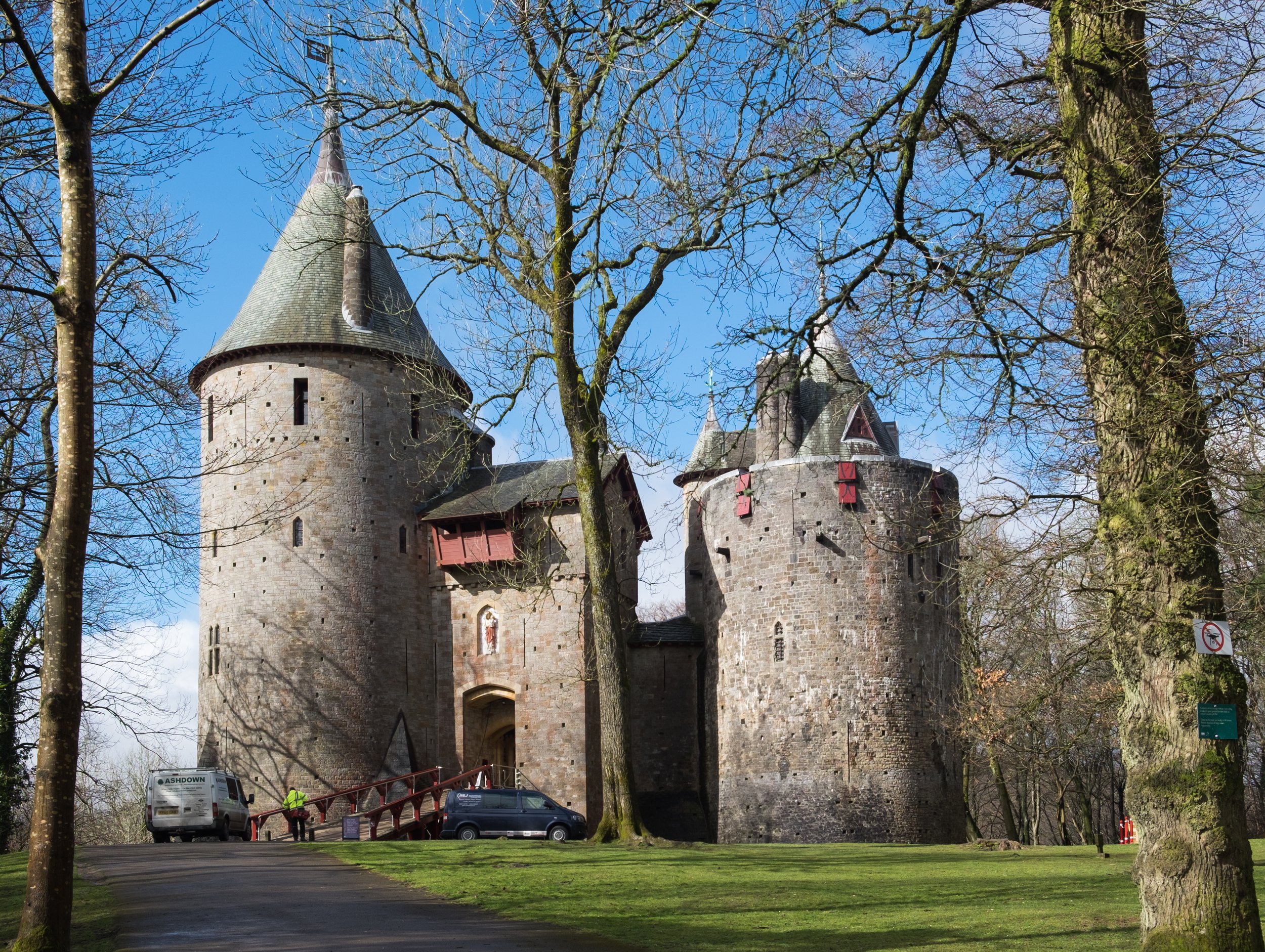
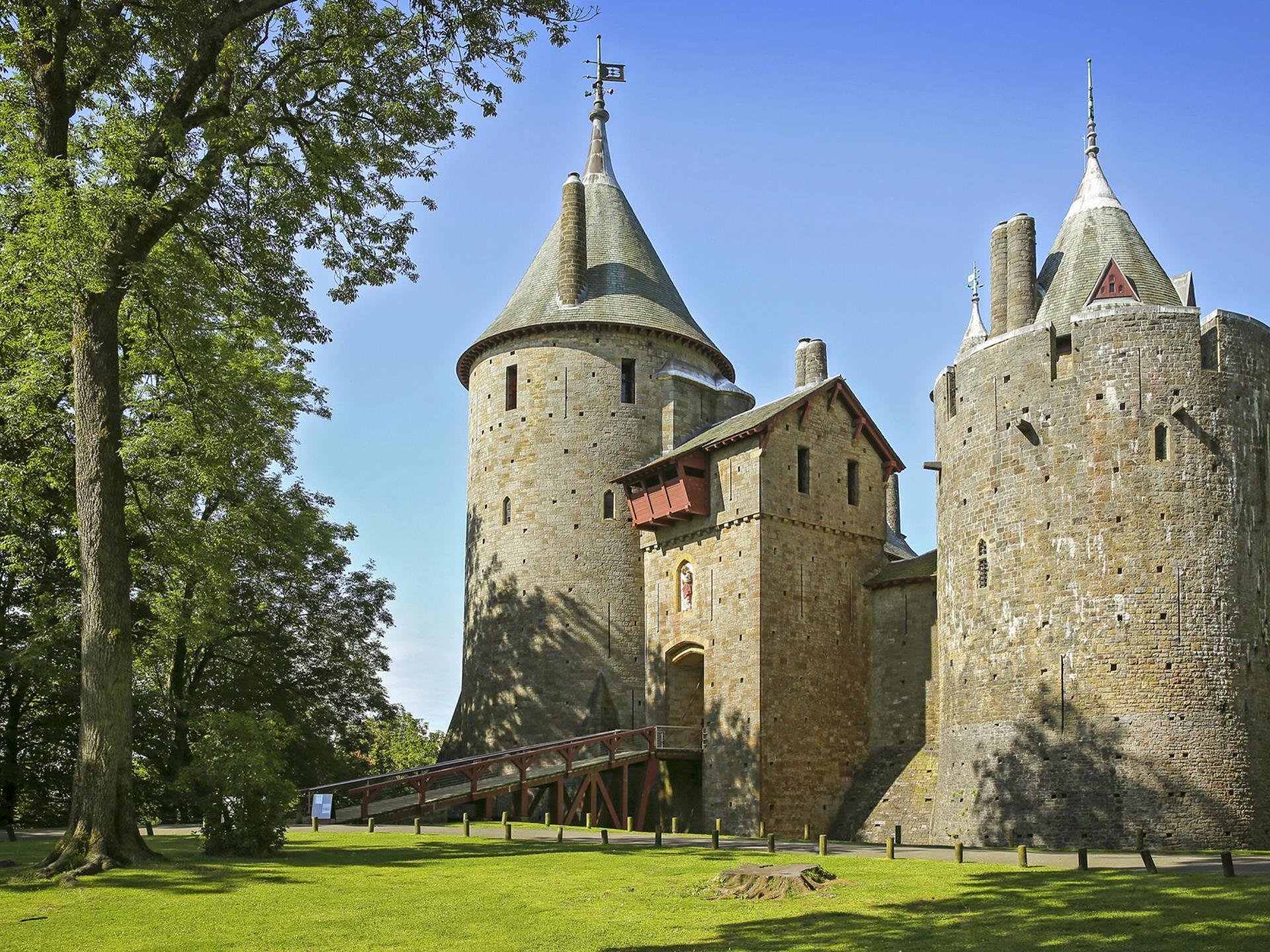
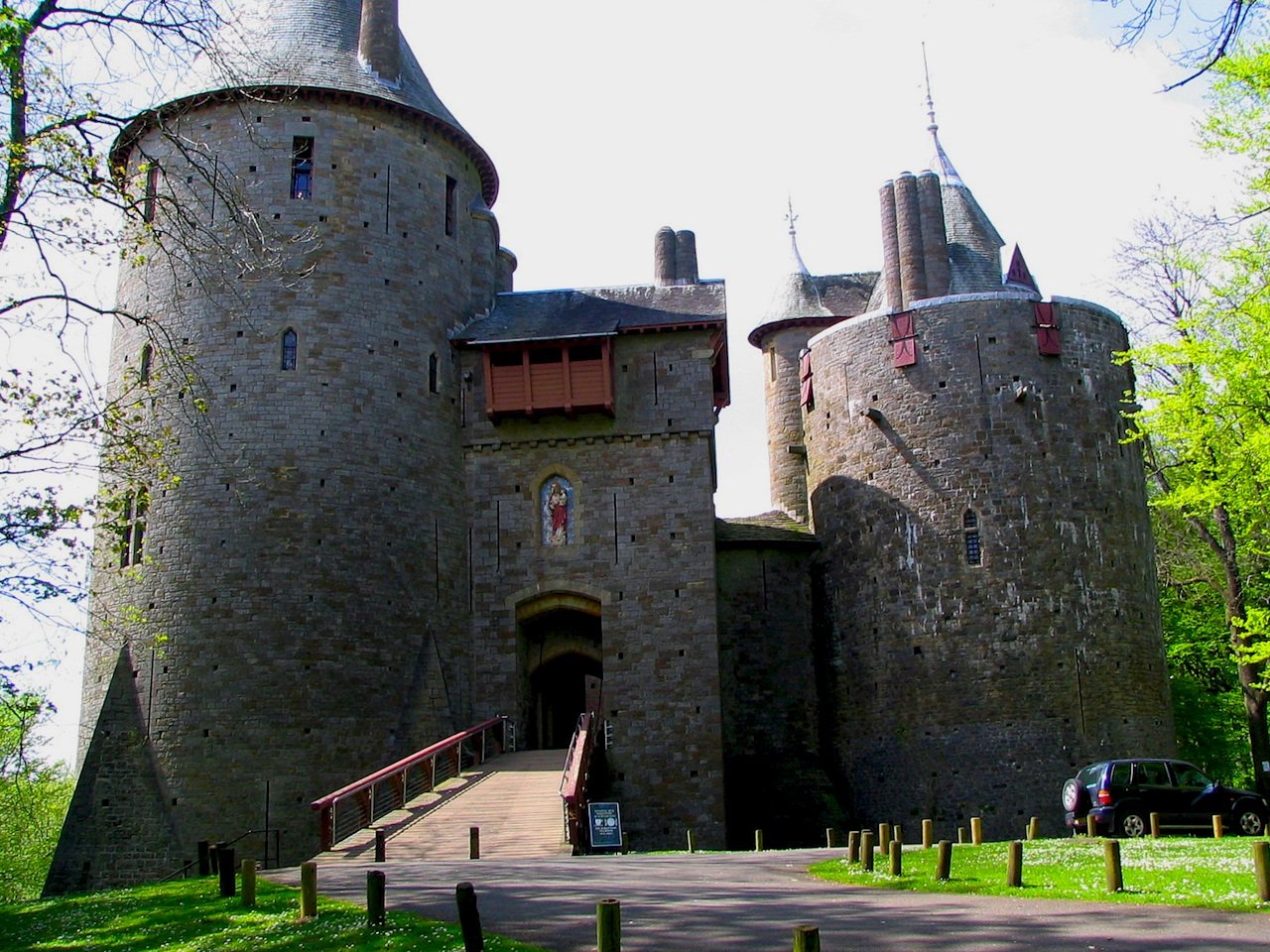
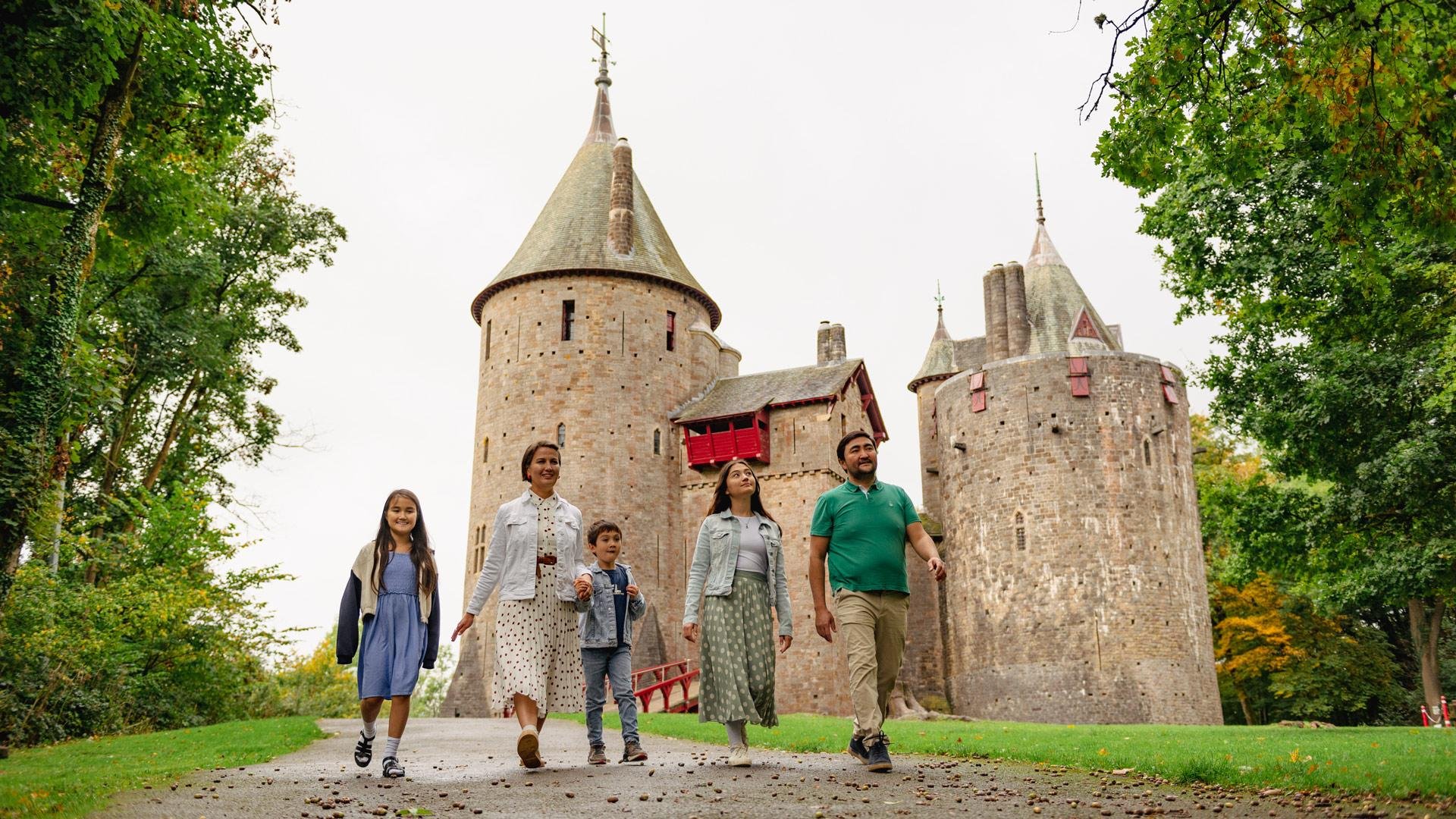
Legends and Stories
Several stories surround it, blending history with folklore. One of the best-known local legends involves a hidden treasure buried beneath the castle. According to the story, medieval soldiers hid gold under the original fortress before abandoning it. This tale is mentioned in some local guide accounts, but no evidence of treasure has ever been found.
Another recurring theme in visitor reports, especially on TripAdvisor, is the so-called “ghostly presence” within the castle. Some guests have described feeling sudden cold spots or hearing unexplained noises, particularly in the Keep Tower. However, these accounts remain anecdotal and are not officially recognised by Cadw or heritage authorities.
William Burges’s designs also include symbolic elements that have inspired modern stories. The mural decorations depict fables and mythical creatures, leading some visitors to refer to the castle as “storybook-like”.
Visiting
Opening times & tickets
According to Cadw, Castell Coch is open daily from 9:30am to 5:00pm from 1 April to 31 October, and from 10:00am to 4:00pm from 1 November to 31 March. Last admissions are 30 minutes before closing time.
Tickets are available on arrival or you can book online (recommended to save 5%). Note: due to limited capacity, pre‑booking is advised .
Ticket prices
See Cadw’s site for current rates, standard, concessions, family options, available to view and book online.
Directions
The castle lies just north of Cardiff in Tongwynlais. It’s approximately 0.6 miles uphill from the nearest bus stop and about 1.5 miles from the nearest train station. Free parking is provided onsite, with a moderate incline up to the entrance.
Facilities
Toilets (including baby‑changing) on-site; some involve steps, 20 steps to baby-change area.
Gift shop in the courtyard, accessed via six steps from the drawbridge area.
Light refreshments and tearoom available .
Accessibility
Drawbridge entry features wooden slats and steep gradients. Wheelchair access may be possible depending on the individual and wheelchair type, visitors are advised to call ahead (02920 810101).
Stone cobbles and uneven surfaces throughout the courtyard.
Dog policy
Dogs are not permitted inside the castle, except for recognised assistance dogs.
Nearby Attractions
Caerphilly Castle
One of Wales’s largest medieval castles, located about 3.2 miles east. It offers extensive grounds and includes a free dog‑friendly policy for leaded pets on the ground floor.
Tinkinswood Chambered Tomb
A Neolithic burial site around 6 miles north‑west. It provides insight into prehistoric life and has no entrance fee.
St Lythans Chambered Tomb
Another prehistoric site located about 6.7 miles from the site. Accessible year‑round and free to visit.
Visitor Tips
Wear comfortable footwear due to cobbled surfaces and staircases
Arrive early in summer to avoid limited parking availability
Book tickets online to secure preferred time slots and save money
Allow around 1.5 to 2 hours for a relaxed visit
Use public transport if staying in Cardiff to avoid uphill parking queues
Check accessibility details in advance if you have mobility concerns
Photography is allowed inside but without flash
Bring a jacket; parts of the castle can feel cool even in summer
FAQs
-
Most visitors spend between 1.5 and 2 hours exploring the castle and grounds. This includes time to visit the rooms, towers, and gift shop.
-
The site has limited accessibility. The drawbridge and courtyard have cobbles, and there are steps to most areas. Cadw advises wheelchair users to call ahead to discuss specific needs.
-
Yes. Local buses run from Cardiff to Tongwynlais, and the castle is about a 0.6-mile uphill walk from the nearest stop. Rail links are also nearby at Taff’s Well station, around 1.5 miles away.
-
Yes. Light refreshments are available from the onsite tearoom. The selection includes hot drinks and snacks.
-
Only assistance dogs are allowed inside the castle. Dogs on leads are welcome in the woodland areas surrounding the site.
Wrapping it Up
This castle offers a unique combination of medieval history and Victorian creativity. Its colourful interiors and picturesque towers attract visitors interested in architecture, history, and design. The castle’s proximity to Cardiff makes it an accessible day trip. Managed by Cadw, it provides an educational and visually striking experience within a woodland setting.
Sources
Coordinates
Verified GPS: 51°32′9″ N, 3°15′17″ W (Latitude 51.5359, Longitude −3.2548)
LatitudeOpening times & ticket booking
Cadw site, including online booking requirement
Wikipedia+8cadw.gov.wales+8cadw.gov.wales+8Ticket prices
£6.00 adult; concessions £4.20; children under 5 free
cadw.gov.wales+3Tripadvisor+3Cotswold Outdoor+3
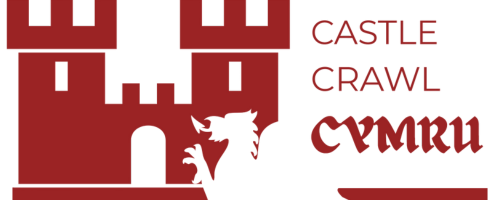

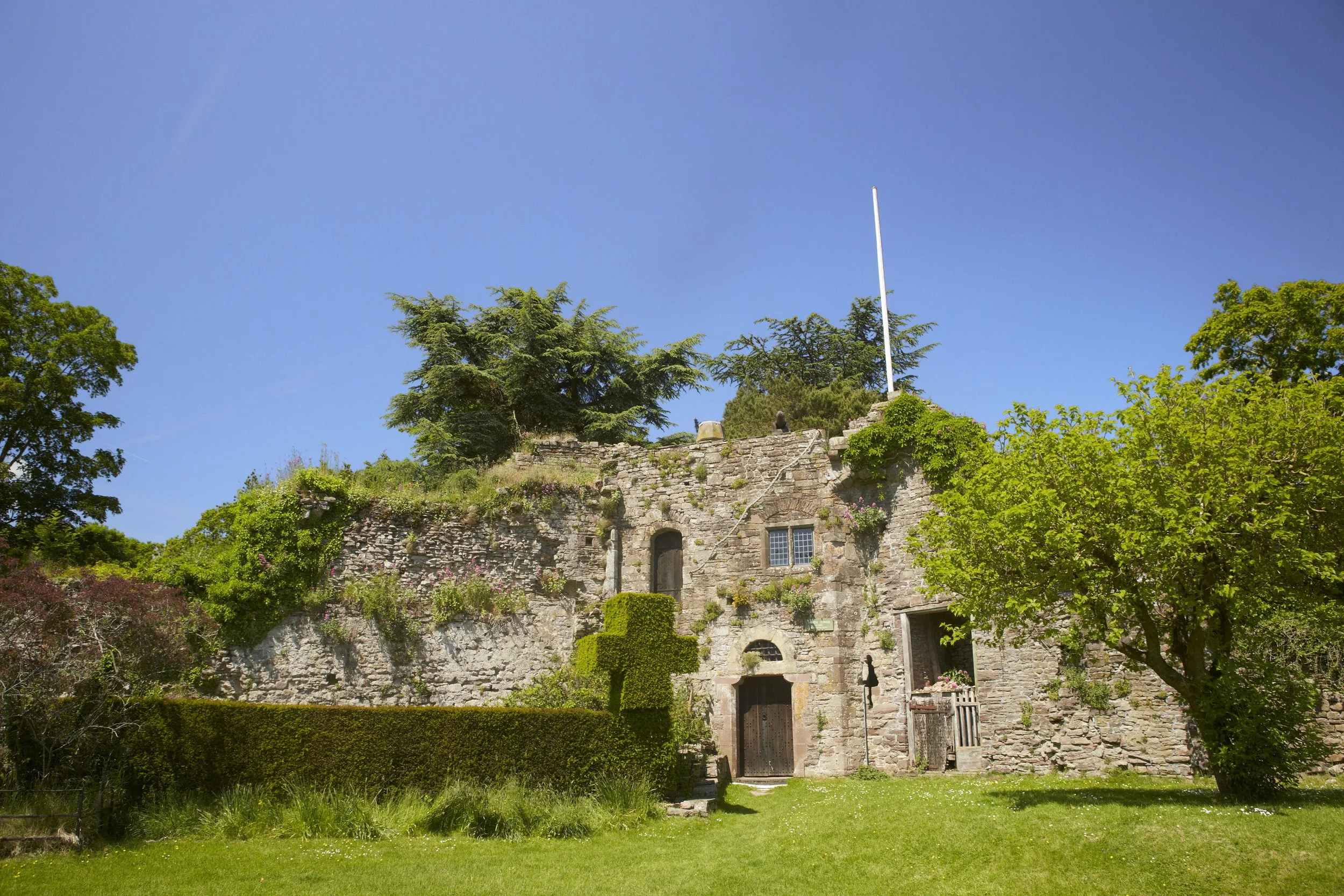
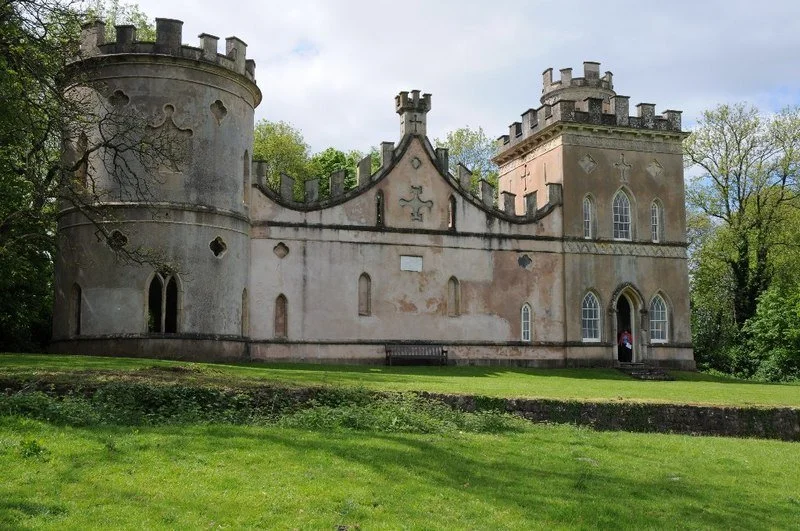
Cardiff Castle is a medieval and Victorian-era site in the centre of Cardiff, the capital of Wales.